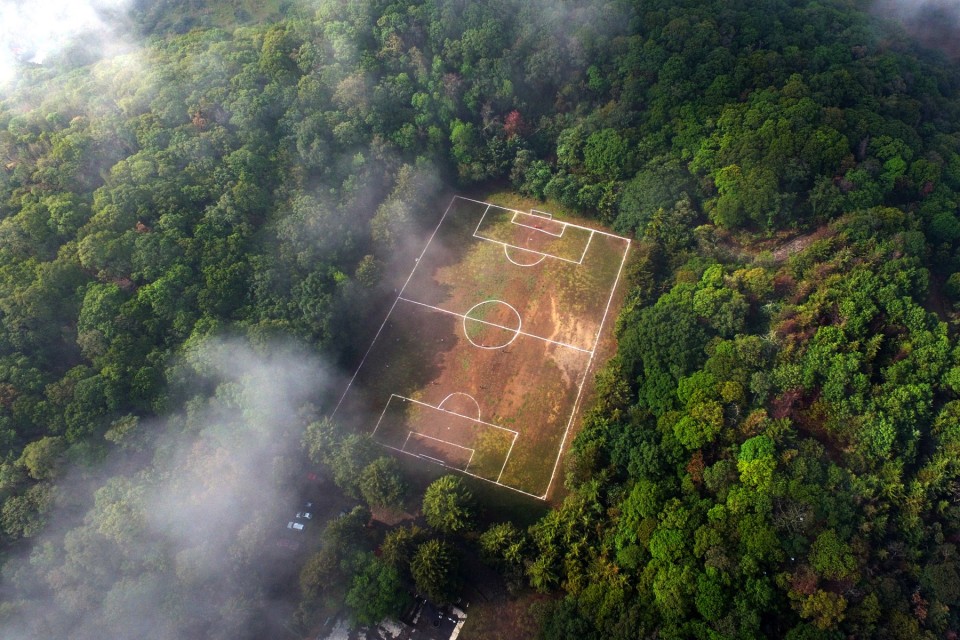
MEXICO CITY, Mexico (AFP) — A volcano crater is not an obvious venue for a football match, but that’s where a referee blows the whistle for kick-off each weekend on the outskirts of Mexico City.
“It’s a unique pitch,” said 32-year-old player Adrian Garcia, a graphic designer by profession.
“It’s very nice to come here to distract yourself, to relax, with friends and family,” he added.
The inactive Teoca volcano rises around 2,700 meters (roughly 8,900 feet) above sea level in the district of Xochimilco, a green lung in the southeast of the sprawling megacity.
About 10 teams belonging to an amateur league play in its crater on weekends.
The area was once a ceremonial center, but after falling into disuse, it was transformed into a football venue.
“The pitch must be about 70 years old,” said league representative Joel Becerril.
“They used to carry me up here when I was a child,” he added.
At dawn, a thick mist covers the football pitch, but it gradually clears as the sun rises.
A single road reaches the summit, as well as an 18-kilometer (11-mile) hiking trail up the volcano’s forested slopes.
“It’s fantastic,” said 47-year-old goalkeeper Daniel Mancilla Pena.
“It’s very impressive to come all the way up here to the pitch and to have a very nice setting to play football,” he added.
According to experts from the National Autonomous University of Mexico, there are more than 200 volcanoes, most of them inactive, in the south of Mexico City and on the border with the neighboring state of Morelos.
Mexico sits in the world’s most seismically and volcanically active zone, known as the Ring of Fire, where the Pacific plate meets surrounding tectonic plates.
One of the country’s active volcanoes, Popocatepetl, located just 70 kilometers from the capital, rattled nerves in May when it spewed ash, gases and molten rock.
© Agence France-Presse







